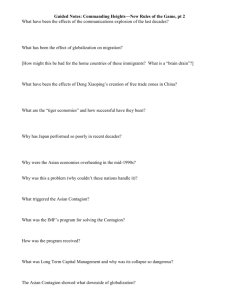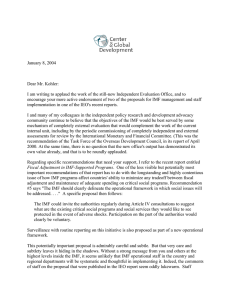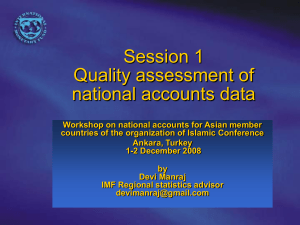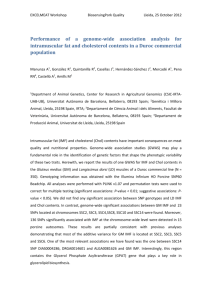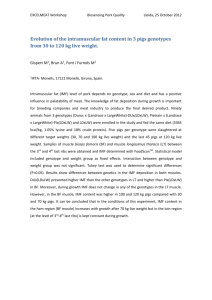Why Public Investment Really is a Free Lunch
advertisement
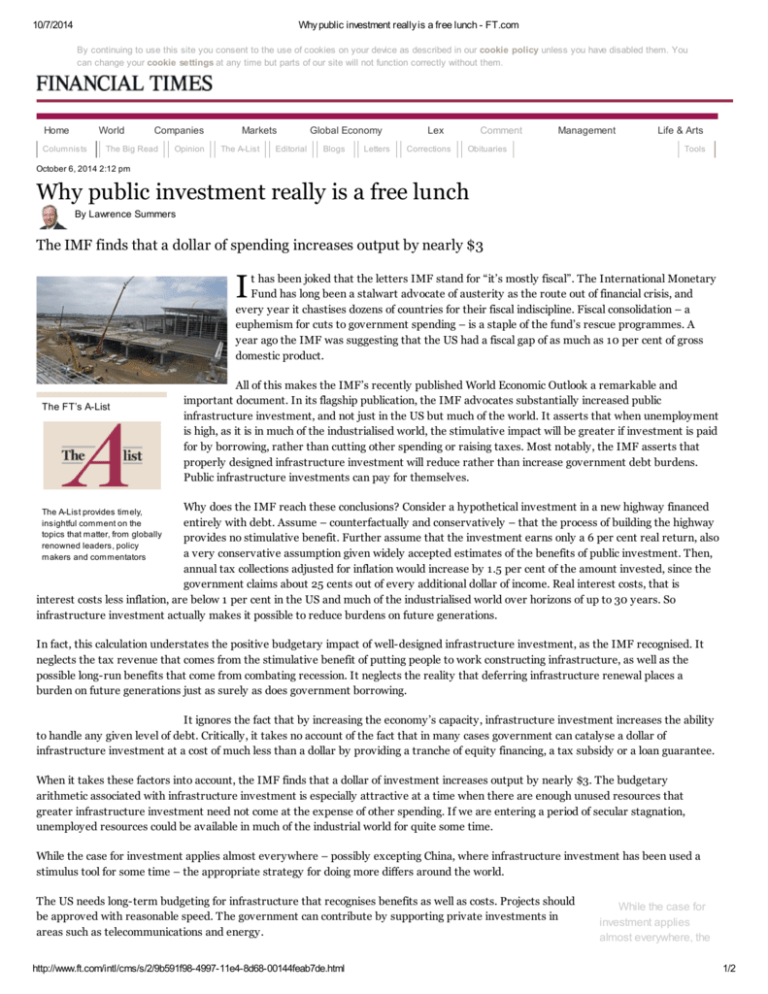
10/7/2014 Why public investment really is a free lunch - FT.com By continuing to use this site you consent to the use of cookies on your device as described in our cookie policy unless you have disabled them. You can change your cookie settings at any time but parts of our site will not function correctly without them. Home World Columnists Companies The Big Read Opinion Markets The A-List Editorial Global Economy Blogs Letters Lex Corrections Comment Management Obituaries Life & Arts Tools October 6, 2014 2:12 pm Why public investment really is a free lunch By Lawrence Summers The IMF finds that a dollar of spending increases output by nearly $3 I t has been joked that the letters IMF stand for “it’s mostly fiscal”. The International Monetary Fund has long been a stalwart advocate of austerity as the route out of financial crisis, and every year it chastises dozens of countries for their fiscal indiscipline. Fiscal consolidation – a euphemism for cuts to government spending – is a staple of the fund’s rescue programmes. A year ago the IMF was suggesting that the US had a fiscal gap of as much as 10 per cent of gross domestic product. ©AFP The FT’s A-List All of this makes the IMF’s recently published World Economic Outlook a remarkable and important document. In its flagship publication, the IMF advocates substantially increased public infrastructure investment, and not just in the US but much of the world. It asserts that when unemployment is high, as it is in much of the industrialised world, the stimulative impact will be greater if investment is paid for by borrowing, rather than cutting other spending or raising taxes. Most notably, the IMF asserts that properly designed infrastructure investment will reduce rather than increase government debt burdens. Public infrastructure investments can pay for themselves. Why does the IMF reach these conclusions? Consider a hypothetical investment in a new highway financed entirely with debt. Assume – counterfactually and conservatively – that the process of building the highway provides no stimulative benefit. Further assume that the investment earns only a 6 per cent real return, also a very conservative assumption given widely accepted estimates of the benefits of public investment. Then, annual tax collections adjusted for inflation would increase by 1.5 per cent of the amount invested, since the government claims about 25 cents out of every additional dollar of income. Real interest costs, that is interest costs less inflation, are below 1 per cent in the US and much of the industrialised world over horizons of up to 30 years. So infrastructure investment actually makes it possible to reduce burdens on future generations. The A-List provides timely, insightful comment on the topics that matter, from globally renowned leaders, policy makers and commentators In fact, this calculation understates the positive budgetary impact of well-designed infrastructure investment, as the IMF recognised. It neglects the tax revenue that comes from the stimulative benefit of putting people to work constructing infrastructure, as well as the possible long-run benefits that come from combating recession. It neglects the reality that deferring infrastructure renewal places a burden on future generations just as surely as does government borrowing. It ignores the fact that by increasing the economy’s capacity, infrastructure investment increases the ability to handle any given level of debt. Critically, it takes no account of the fact that in many cases government can catalyse a dollar of infrastructure investment at a cost of much less than a dollar by providing a tranche of equity financing, a tax subsidy or a loan guarantee. When it takes these factors into account, the IMF finds that a dollar of investment increases output by nearly $3. The budgetary arithmetic associated with infrastructure investment is especially attractive at a time when there are enough unused resources that greater infrastructure investment need not come at the expense of other spending. If we are entering a period of secular stagnation, unemployed resources could be available in much of the industrial world for quite some time. While the case for investment applies almost everywhere – possibly excepting China, where infrastructure investment has been used a stimulus tool for some time – the appropriate strategy for doing more differs around the world. The US needs long-term budgeting for infrastructure that recognises benefits as well as costs. Projects should be approved with reasonable speed. The government can contribute by supporting private investments in areas such as telecommunications and energy. http://www.ft.com/intl/cms/s/2/9b591f98-4997-11e4-8d68-00144feab7de.html While the case for investment applies almost everywhere, the 1/2 10/7/2014 Why public investment really is a free lunch - FT.com Europe needs mechanisms for carrying out self-financing infrastructure projects outside existing budget caps. This may be possible through the expansion of the European Investment Bank or more use of capital budget concepts in implementing fiscal reviews. appropriate strategy for doing more differs around the world Emerging markets need to make sure that projects are chosen in a reasonable way based on economic benefit. What is crucial everywhere is the recognition that in a time of economic shortfall and inadequate public investment, there is for once a free lunch – a way for governments to strengthen both the economy and their own financial positions. The IMF, a bastion of “tough love” austerity, has come to this important realisation. Countries with the wisdom to follow its lead will benefit. The writer is Charles W Eliot university professor at Harvard and a former US Treasury secretary RELATED TOPICS International Monetary Fund, United States of America, China Printed from: http://www.ft.com/cms/s/2/9b591f98-4997-11e4-8d68-00144feab7de.html Print a single copy of this article for personal use. Contact us if you wish to print more to distribute to others. © THE FINANCIAL TIMES LTD 2014 FT and ‘Financial Times’ are trademarks of The Financial Times Ltd. http://www.ft.com/intl/cms/s/2/9b591f98-4997-11e4-8d68-00144feab7de.html 2/2



